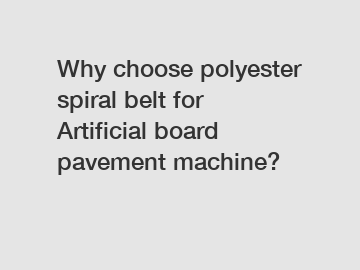HDPE Corrugated Pipes: Unveiling the Technical Specifications for Superior Performance
High-Density Polyethylene (HDPE) corrugated pipes have revolutionized the field of piping solutions with their versatile applications and robust performance. These pipes are widely used in various sectors due to their exceptional durability, flexibility, and resistance to corrosion. This article delves into the technical specifications of HDPE corrugated pipes, shedding light on the features that make them a preferred choice in the construction and infrastructure industries.
Material Composition:
HDPE corrugated pipes are manufactured using high-density polyethylene, a thermoplastic polymer known for its excellent strength-to-density ratio. This material ensures that the pipes are lightweight, yet incredibly durable, making them suitable for a wide range of applications. HDPE is also resistant to chemicals, making these pipes an ideal choice for conveying fluids in diverse environments.
Corrugated Design:
One of the distinctive features of HDPE corrugated pipes is their corrugated exterior. This design not only enhances the structural integrity of the pipes but also provides flexibility. The corrugations allow the pipes to withstand external pressures, soil movements, and other environmental stresses without compromising their performance. This flexibility is particularly advantageous in underground applications where the pipes may encounter shifting soil conditions.

Durability and Longevity:
HDPE corrugated pipes boast an impressive lifespan, often exceeding that of traditional piping materials. The inherent resistance of HDPE to corrosion, abrasion, and chemicals ensures that these pipes maintain their structural integrity over time. This durability translates into long-term cost savings for infrastructure projects, as the need for frequent replacements and repairs is significantly reduced.
Jointing Systems:
Explore more:Rubber & Plastics
Advantages and Applications of PE Protective Film
Can HDPE Pipe Be Used for Gas?
What Type of Plastic is A Plastic Flat Tray?
What Material Is Used for High-Pressure Seals?
Applications Of Silicone Duckbill Valves Across Industries
RPET: Transforming Plastic Waste into Sustainable Solutions
The jointing systems used in HDPE corrugated pipes play a crucial role in ensuring leak-free and secure connections. Various jointing methods are employed, such as butt welding, electrofusion welding, and push-fit connections. These methods not only contribute to the pipes' overall strength but also streamline installation processes, saving time and labor costs.
Technical Specifications:
Diameter Range: HDPE corrugated pipes are available in a wide range of diameters, catering to diverse applications. The diameter specifications typically range from 50mm to 1200mm, providing flexibility in choosing the appropriate size for specific projects.
Pressure Rating: The pipes are designed to handle different levels of internal pressure. The pressure rating varies based on the diameter and wall thickness of the pipes, ensuring compatibility with various fluid conveyance requirements.
Length: HDPE corrugated pipes are commonly supplied in standard lengths, with options for customization. The length specifications contribute to efficient installation processes and minimize the need for additional joints.
Flexibility Class: The flexibility class of HDPE corrugated pipes determines their ability to withstand external loads and deformation. Higher flexibility classes are suitable for applications where the pipes may encounter substantial ground movement.
Conclusion:
HDPE corrugated pipes have emerged as a reliable and cost-effective solution for a wide array of piping applications. The technical specifications, including material composition, corrugated design, jointing systems, and dimensional characteristics, collectively contribute to the superior performance and longevity of these pipes. As the construction and infrastructure industries continue to evolve, HDPE corrugated water pipes stand tall as a durable and versatile choice for modern piping systems.
Revolutionizing Sustainability: The Power of rPET Bottles
RPET Fabric: What You Need to Know
Benefits and Applications of PET Protective Film
What does uhmw stand for?
HDPE Natural Gas Pipes
Plate & Frame Filter Press vs. Belt Press
How Polyester Filter Belts Improve Pavement Machine Efficiency
177
0
0
Related Articles




Comments
All Comments (0)